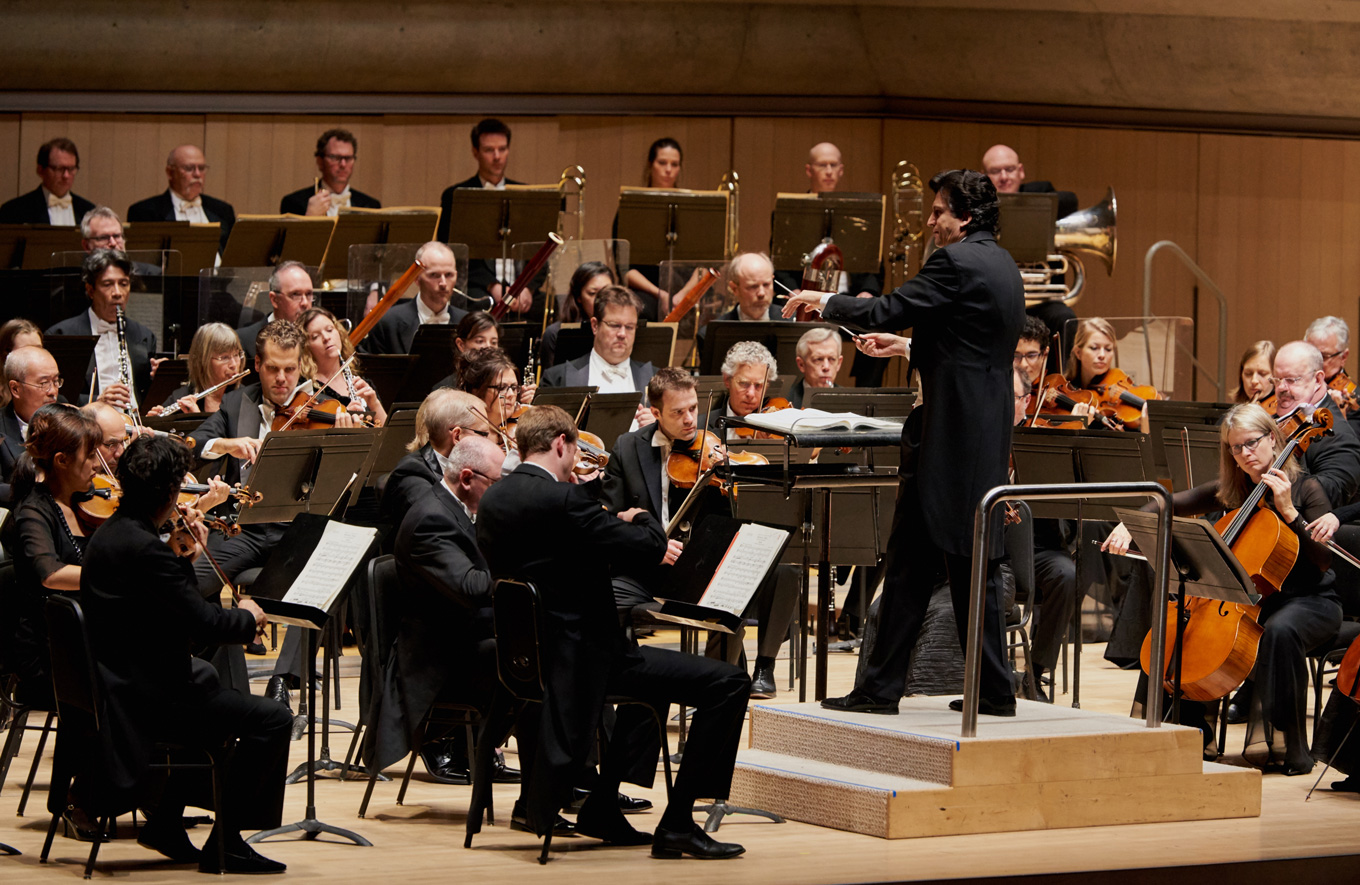
In review: Mahler & other beauties at the TSO
ReviewI took a break from straight-up opera last night, and headed to Roy Thomson Hall to hear the Toronto Symphony Orchestra in the latest instalment of their ongoing Decades Project, in partnership with the AGO, which looks deeply at the music of the early 20th century, last night in particular, 1900-1909. These years brought us a large orchestra, with lush, creative sound palates that are a clear predecessor to soon-to-come film scores. It’s the culmination of all the Romantic music coming out of the 19th century, and all the experimentation and industry of the early 1900s. A simplified way of describing it is, “more is more”.
The TSO started off with the timelessly sexy Dance of the Seven Veils from Strauss’ Salome. It was neat to see the orchestra do the dancing, a change from the traditional sight of one troubled soprano seducing her stepfather. I wondered if maestro Michael Sanderling took the opportunity, senza dancer, to lead a subtler, gentler version of this loaded scene; it was subdued for dance music, but no one sacrificed fire when it counted. My concert date was my lovely fiancé, who was new to much of this music; he leaned in during the applause to tell me, “that was pretty badass.” I concurred.

Canadian soprano and Toronto favourite Simone Osborne joined the TSO for two of 1900-1909’s most objectively beautiful arias, Dvořák’s “Song to the Moon” (Rusalka), and Charpentier’s “Depuis le jour” (Louis). Simone has always had a sweet, friendly sound, and in this rep she sounded like a grown-up version of that. Her top bloomed beautifully in the hall, to go with that warm, expressive face she brings onstage with her. Maybe it was the aria, or maybe it was my fussy contact lenses that night, but I got a bit misty hearing her sing the Rusalka. I had a flashback to a summer long ago, when Simone and I were both at Opera NUOVA; I think her singing of “Song to the Moon,” way back when, was one of my first hearings of the aria. Last night, it was one of those cool moments where you see your colleagues as fellow professionals. With Simone, there was never any doubt she’d make it to the ranks of “pro, but it was still a sweet sight. The rest of the audience loved her singing, too, since she came back to sing a bonus aria, “Vilja-Lied” from Lehár’s The Merry Widow.
Mahler’s 4th Symphony took up the second half of the concert, and the TSO shone. Gorgeous chamber moments from the players came in and out of that full Mahler orchestral sound, including brief but beautiful solos from concertmaster Jonathan Crow. It was a polished performance, but there was still something raw about how the orchestra played. I forgot how stunning that theme-and-variations third movement is, too. The symphony was composed backwards, maestro Sanderling told us, with the first three movements inspired by and leading towards the finale. The final movement is set to a text from Des Knaben Wunderhorn, “Der Himmel hängt voll Geigen,” and given the title “Das himmlische Leben” by Mahler himself. Simone Osborne returned to the stage to sing the finale, which is a picture of heaven from the point of view of a child. She had that child-like innocence in her posture, but I felt a very mature calm about her as she sang. It was one of those concert endings where you’re happily heavy in your seat.
You can (and should) catch the performance once more, this Saturday evening at 8pm. For details and ticket information, click right here.


Comments